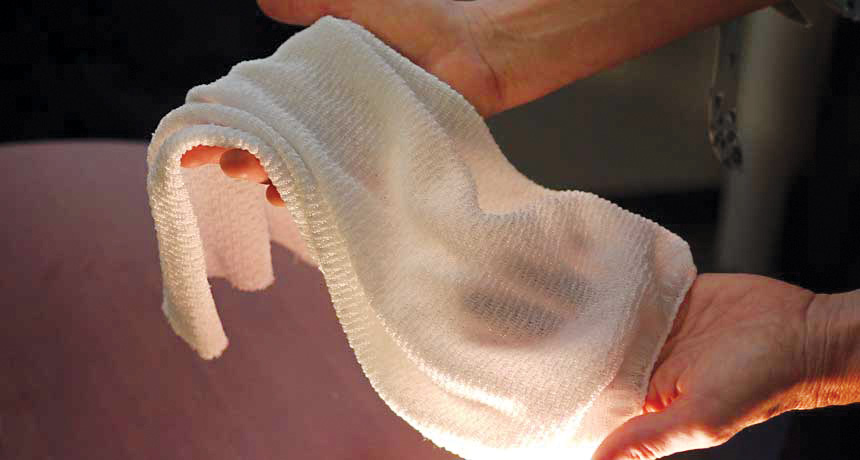A new fabric becomes more breathable as you work up a sweat
Fibers in the textile collapse or expand based on skin moisture

ADAPTABLE FABRIC Material knitted from special humidity-responsive yarn becomes more insulating or breathable, depending on how much you’re sweating.
Faye Levine/Univ. of Maryland